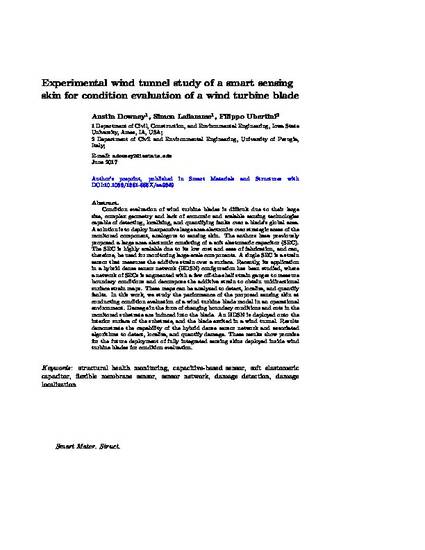
Condition evaluation of wind turbine blades is difficult due to their large size, complex geometry and lack of economic and scalable sensing technologies capable of detecting, localizing, and quantifying faults over a blade's global area. A solution is to deploy inexpensive large area electronics over strategic areas of the monitored component, analogous to sensing skin. The authors have previously proposed a large area electronic consisting of a soft elastomeric capacitor (SEC). The SEC is highly scalable due to its low cost and ease of fabrication, and can, therefore, be used for monitoring large-scale components. A single SEC is a strain sensor that measures the additive strain over a surface. Recently, its application in a hybrid dense sensor network (HDSN) configuration has been studied, where a network of SECs is augmented with a few off-the-shelf strain gauges to measure boundary conditions and decompose the additive strain to obtain unidirectional surface strain maps. These maps can be analyzed to detect, localize, and quantify faults. In this work, we study the performance of the proposed sensing skin at conducting condition evaluation of a wind turbine blade model in an operational environment. Damage in the form of changing boundary conditions and cuts in the monitored substrate are induced into the blade. An HDSN is deployed onto the interior surface of the substrate, and the blade excited in a wind tunnel. Results demonstrate the capability of the HDSN and associated algorithms to detect, localize, and quantify damage. These results show promise for the future deployment of fully integrated sensing skins deployed inside wind turbine blades for condition evaluation.
Available at: http://works.bepress.com/simon_laflamme/51/

This is a manuscript of an article published as Downey, Austin, Simon Laflamme, and Filippo Ubertini. "Experimental wind tunnel study of a smart sensing skin for condition evaluation of a wind turbine blade." Smart Materials and Structures 26, no. 12 (2017): 125005. DOI: 10.1088/1361-665X/aa9349. Posted with permission.